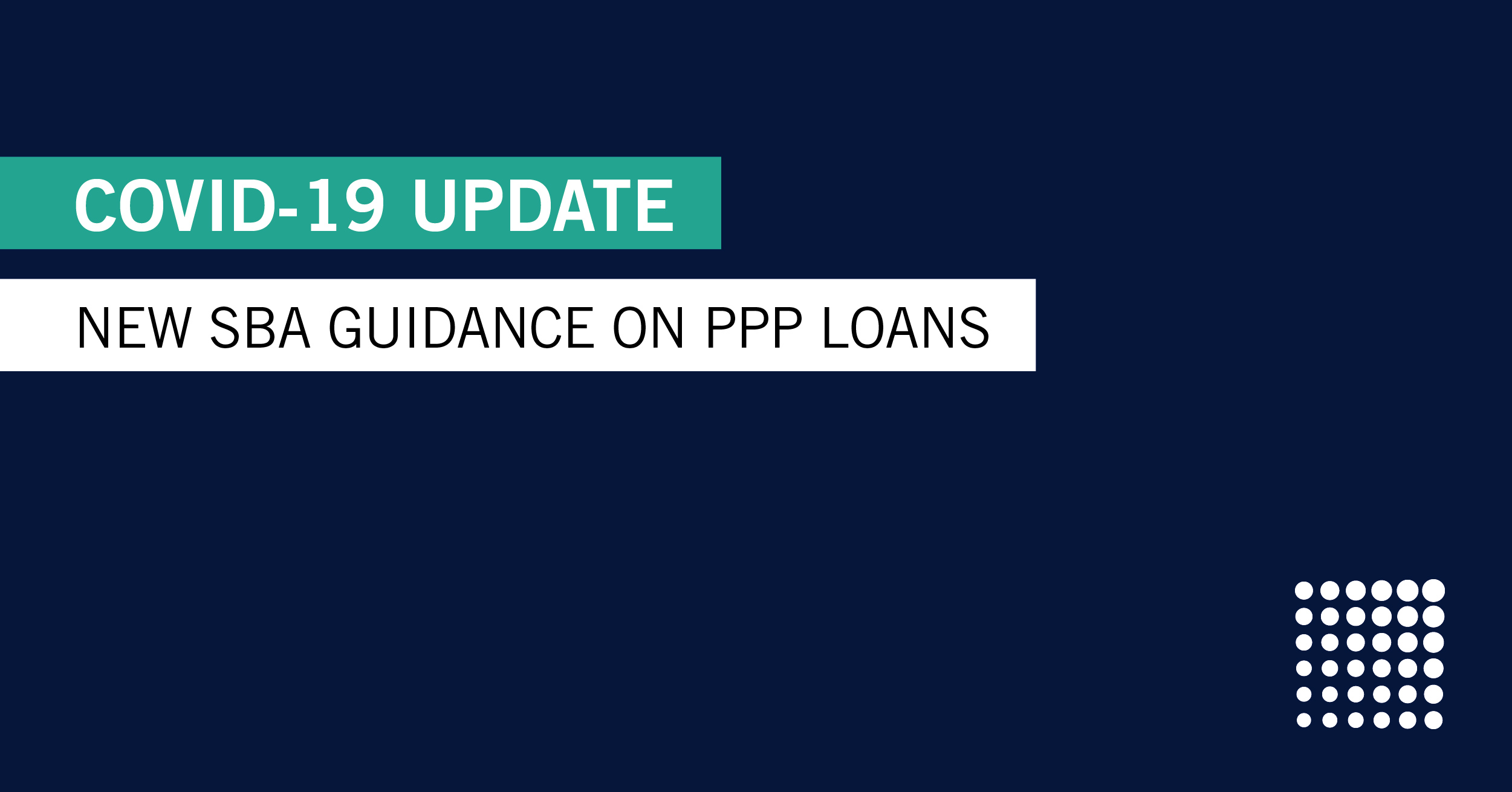April 6 Guidance from the SBA on Paycheck Protection Program (PPP) Loans
In our blog post yesterday morning, CWA was hopeful that the SBA would be issuing new guidance soon to clear up additional confusion surrounding PPP loans.
At 10:00 p.m. on April 6, the SBA issued much needed guidance in the form of 18 FAQs regarding PPP loans. The full list of 18 FAQs issued by the SBA can be found here.
CWA has reviewed the FAQs and will address two of the SBA’s answers that will impact your PPP loan:
Question #7: The CARES Act excludes from the definition of payroll costs any employee compensation in excess of an annual salary of $100,000. Does that exclusion apply to all employee benefits of monetary value?
SBA Answer:
No. The exclusion of compensation in excess of $100,000 annually applies only to cash compensation, not to non-cash benefits, including:
- employer contributions to defined-benefit or defined-contribution retirement plans
- payment for the provision of employee benefits consisting of group health care coverage, including insurance premiums and
- payment of state and local taxes assessed on compensation of employees
CWA Commentary & Strategy:
The $100,000 salary limitation does not include employer-paid group health insurance premiums, retirement plan contributions (for both 401(k) and Defined Benefit and Cash Balance plans) and state and local taxes. As such, this enhanced guidance paves the way for clients to nail down an accurate loan qualification amount. We would encourage all CWA clients to work with your local banker to make sure you are getting full credit for any group health insurance premiums and retirement plan contributions for yourself and your staff as a result of this enhanced guidance.
Question #16: How should a borrower account for federal taxes when determining its payroll costs for purposes of the maximum loan amount, allowable uses of a PPP loan, and the amount of a loan that may be forgiven?
SBA Answer:
Under the Act, payroll costs are calculated on a gross basis without regard to (i.e., not including subtractions or additions based on) federal taxes imposed or withheld, such as the employee’s and employer’s share of Federal Insurance Contributions Act (FICA) and income taxes required to be withheld from employees. As a result, payroll costs are not reduced by taxes imposed on an employee and required to be withheld by the employer, but payroll costs do not include the employer’s share of payroll tax. For example, an employee who earned $4,000 per month in gross wages, from which $500 in federal taxes was withheld, would count as $4,000 in payroll costs. The employee would receive $3,500, and $500 would be paid to the federal government. However, the employer-side federal payroll taxes imposed on the $4,000 in wages are excluded from payroll costs under the statute.
CWA Commentary & Strategy:
This guidance clears up a lot of confusion surrounding the definition of payroll costs, for both loan qualification and forgiveness purposes. The SBA is now clear that federal and state taxes withheld are not subtracted from gross pay. In addition, it is now clear that the employer’s share of payroll taxes (Social Security and Medicare) should not be added to gross payroll. If your payroll provider previously issued a payroll summary report including payroll taxes paid as part of your gross wages, you will need to get a new payroll summary report from them. If you already applied for your PPP loan, on or before April 6, and used payroll taxes in your calculation of gross pay, you will fall under a safe harbor provision.
To hear more about the PPP loan process, taking into account last night’s communication from the SBA, listen to our latest webinar, Your PPP Loan: Working With Your Bank to Get What You Need recorded on April 7, 2020.
We will continue to update you with any changes that may come in the coming days or weeks. Bookmark our COVID-19 Resources page to stay up to date.














